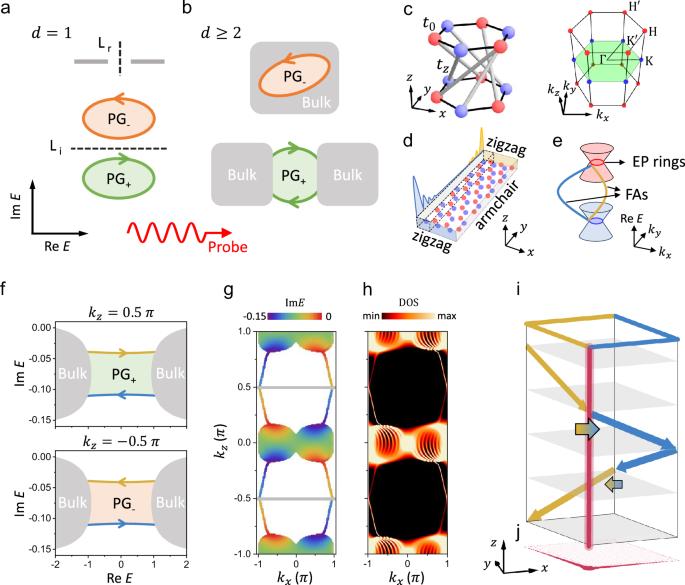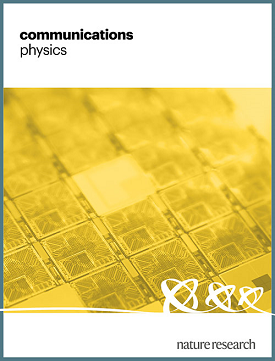Experimental probe of point gap topology from non-Hermitian Fermi-arcs
IF 5.4
1区 物理与天体物理
Q1 PHYSICS, MULTIDISCIPLINARY
引用次数: 0
Abstract
The gap in spectra of a physical system is fundamental in physics, while gap topology further restricts possible occurrent gaps of topological boundary states. The emergence of non-Hermiticity unveils a unique gap type known as the point gap, which forecasts the wavefunction localization, known as the non-Hermitian skin effect. Therefore, experimentally identifying the point gap in the complex frequency plane through a real operating frequency can become a tool for the systematic investigation of skin effects. Here, we utilize a Weyl phononic crystal to demonstrate that the point gap constituted by bulk and Fermi-arc surface states can be observed experimentally by a real-space field mapping technique. The identified point gaps forecast various skin effects and their evolutions. We further experimentally demonstrate the hinge skin effect in a parallelogram structure. Our work provides a feasible recipe to explore point gap topology experimentally in a variety of systems and certainly stimulates the research on skin effects in three-dimensional systems. Point gap is signature of non-Hermitian systems, but the experimental identification of nontrivial point gaps is elusive. Here, the authors use a Weyl phononic crystal to demonstrate that the point gap constituted by bulk and Fermi-arc surface states can be observed experimentally by a real-space field mapping technique and discover various skin effects and their evolutions.


非ermitian费米弧点隙拓扑的实验探索
物理系统光谱中的间隙是物理学的基础,而间隙拓扑则进一步限制了拓扑边界态可能出现的间隙。非赫米提性的出现揭示了一种称为点间隙的独特间隙类型,它预示着波函数的局部化,即所谓的非赫米提趋肤效应。因此,通过实际工作频率在复频平面上实验性地识别点间隙,可以成为系统研究趋肤效应的工具。在这里,我们利用韦尔声波晶体证明,通过实空间场映射技术,可以在实验中观察到由体态和费米弧面态构成的点隙。确定的点隙预报了各种集肤效应及其演变。我们进一步通过实验证明了平行四边形结构中的铰链集肤效应。我们的工作为在各种系统中实验性地探索点间隙拓扑提供了可行的方法,必将激发对三维系统集肤效应的研究。点间隙是非全息系统的特征,但非微观点间隙的实验识别却难以捉摸。在此,作者利用韦尔声波晶体证明,可以通过实空间场映射技术在实验中观察到由体态和费米弧表面态构成的点隙,并发现各种趋肤效应及其演变。
本文章由计算机程序翻译,如有差异,请以英文原文为准。
求助全文
约1分钟内获得全文
求助全文
来源期刊

Communications Physics
Physics and Astronomy-General Physics and Astronomy
CiteScore
8.40
自引率
3.60%
发文量
276
审稿时长
13 weeks
期刊介绍:
Communications Physics is an open access journal from Nature Research publishing high-quality research, reviews and commentary in all areas of the physical sciences. Research papers published by the journal represent significant advances bringing new insight to a specialized area of research in physics. We also aim to provide a community forum for issues of importance to all physicists, regardless of sub-discipline.
The scope of the journal covers all areas of experimental, applied, fundamental, and interdisciplinary physical sciences. Primary research published in Communications Physics includes novel experimental results, new techniques or computational methods that may influence the work of others in the sub-discipline. We also consider submissions from adjacent research fields where the central advance of the study is of interest to physicists, for example material sciences, physical chemistry and technologies.
 求助内容:
求助内容: 应助结果提醒方式:
应助结果提醒方式:


